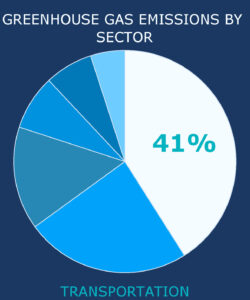California spends roughly $28 billion a year on transportation infrastructure projects, with almost half of that amount derived from local funding sources. A majority of these dollars goes to automobile infrastructure, particularly new road and highway expansion projects. This approach undermines California’s environmental and energy priorities, which include increasing public access to transportation options beyond the private, single-occupancy automobile – such as walking, biking, and taking transit. Realigning transportation investments will be critical for California to meet its ambitious environmental goals.
